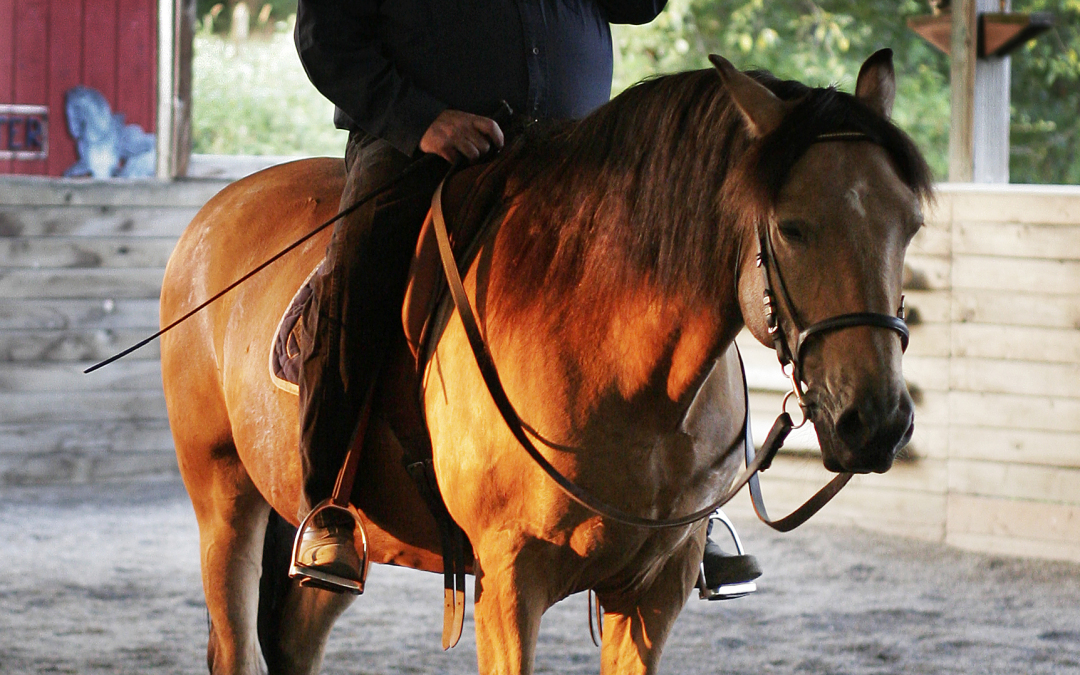In a technical sense, a training session is made up of a series of reprises. A reprise is a sequence of one or more movements joined together without pause between them.
Some trainers make the whole session one long reprise but that is not the best. The best approach is to have a logical physical connection from one reprise to another with a pause between reprises. There must always be a pause between reprises.
This “logical” connection might be focused first on a inside rear and then the outside rear for example or be from one side to the other. The idea is that the horse’s mind can follow along in the session.
Generally in modern dressage, the education of riders and trainer is so poor as to not understand this idea of reprises or dismiss this process as not needed. When such a course is followed training usually appears random or accidental. The mental link is broken between the horse and rider. This is more than unfortunate.
The point of the reprise is also usually grounded in the physiological understanding of training but this too is a mistake. The first consideration in training is not the body but always the mind. The mind training at the start automatically draws the horse’s body along and so warm up takes care of itself and the early conditioning is attended to by understanding and attending to the psychological needs of the horse.
So how do we start a reprise? The answer may be surprising. It starts when you lead the horse in for training and in the grooming. Every effort should be made to be slow and gentle and the horse should be encouraged to interact.
That said, I have a groom who attends to my horses and so I first see the horse in the ring. I attempt to train my grooms to attend with kindness but my first connection in the ring is both slow and loving.
It always starts with gentle touch and it is difficult to give you a set way to start because I listen before I interact. With horses whom I have a relation with it starts with gentle touches on the forehead. The stroking is very slow and careful but sometimes it is on the shoulder or neck.
This leads to a very gentle work in hand, even if it is only on the way to the mounting block. There are so many invisible or almost invisible little things that I do and this is where I think I could write a book but the essence of what is done is the cultivation of a confident gentle connecting. This is the first reprise.
The second reprise is standing in place for mounting and the solemn and gentle joining of the body and mind together which leads to the walk.
The third reprise is when I work each lead in the walk (yes, the walk has leads just like the canter) and then the alternate elevation and extension of individual legs which leads to a counted walk or piaffer depending on the level of the horse.
There is a range of variation possible here but the idea is that each leg is weighed and moved and the central balance is also played with. In the educated horse the placement of weight on each limb is further divided into inner and outer, toe and heel but in the early work there is not enough refinement in the language to have such a dialog.
This can then be repeated in all of the natural gaits. The reprise should consider cadence and a deepening of the horse’s breathing without the breath becoming short or too rapid while avoiding any perspiration. Everything is calm and gentle and the horse always has a say in what is done which is why there are no rules or must do here and it makes it hard to write about.
This is both a technical and practical and there is a lot which is not being said but it is hoped that there may be some insight gained here by sharing this. A good education in dressage breaks each of these reprises down into much smaller steps.
There is a lot of “how does one” do this or that here but if you get the view that I have been pointing to in my writings over the years, much of it will be obvious and certainly those who have had direct contact with these teachings may find a greater clarity from this post.
Good dressage is very beautiful to experience and very pleasurable for the horse. It is a massage in and with space and never rushed or too demanding. All of this is within everyone’s reach.


Recent Comments